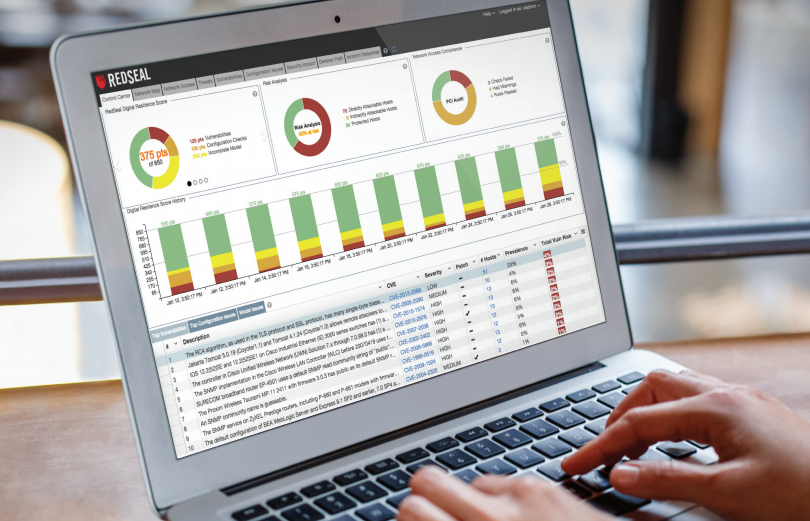
While the focus on cybersecurity has never been higher, the cybersecurity community – a combined team of solution providers, CISOs, boards and others– haven’t been able to stop most attacks from being successful.
Why?
We have focused too much of our efforts on network perimeters, working to detect and prevent cyber attacks. We haven’t done enough to build resilience INSIDE the network, the part of the equation we can control and quantify with a security metric.
Organizations need to build resilience into their infrastructures and adopt an end-end digital resilience strategy to survive and thrive.
How big is the problem? There are 1400+ vendors focused on cybersecurity. Nearly $100B was spent on information security just in 2016. Yet billions of records have been compromised.
The reason is we have not addressed fundamental issues inside the network. Companies need to build resilience into their infrastructure and adopt a corporate-wide digital resilience strategy with a corporate-wide security metric.
A few years back, RedSeal gathered 800 surveys during the RSA Conference. We learned that:
- Practitioners are drowning in data
- They can’t measure the performance or impact of their security efforts
- Current solutions can’t turn data into action
- They need useful cybersecurity metrics
The problem with measuring security is that security is the absence of something. You can’t report how often you were NOT on the cover of Washington Post. Many people start by counting what they are doing. But this measures busy-ness, not business. How can you show actual improvements in cybersecurity?
The Shifting Terrain and Digital Resilience
According to the 2016 TechCrunch CIO Report, 82% of global IT leaders report significant labor shortages in cybersecurity. This, combined with issues such as software defined everything, digital transformation, hybrid datacenters, IoT, and shadow IT, means a big shift in thinking is required. We don’t have enough people to throw at the problem.
Digital resilience is a comprehensive strategy across all IT functions and business processes to minimize the impact of cyber attacks and network interruptions. It’s a different way of thinking. Being resilient means simultaneously striving to minimize each attack and being able to recover quickly from a strike. Resilient organizations have fewer, smaller incidents, understand and respond to them faster, and can rapidly return to normal operations afterwards.
It’s not enough to see the devices in your “as-built” infrastructure – you have to really understand how they are configured and automatically get a list of vulnerabilities.
And that list of vulnerabilities is a problem; there are too many to act on. Even knowing asset value and vulnerability severity aren’t enough to fully understand the risk. You need to understand if they can be accessed. A high value asset with a vulnerability that is segmented behind a firewall is not as big a risk as one that is slightly lower in value, but has an open path to the internet.
RedSeal’s Digital Resilience Score
Resilient organizations must focus on three main areas—being hard to hit, being ready for an attack when it comes, and being able to recover quickly.
RedSeal helps these organizations identify defensive gaps, run continuous penetration tests to measure readiness, and map their entire network infrastructure.
From these capabilities, RedSeal calculates one unified number, so managers, boards of directors and executive management have the understandable and actionable cybersecurity metric they need to drive towards digital resilience.
RedSeal’s Digital Resilience Score focuses on three essential questions:
- Do you have defects that are easy to hit? RedSeal evaluates how weaknesses from incorrectly configured devices and third-party software could impact you.
- Can an attacker reach your valuable assets? RedSeal evaluates how well your network is structured, identifying attack pathways and chains of vulnerability that reduce your ability to withstand and recover from attack.
- Is your network understanding complete? By identifying previously unknown parts of your network, RedSeal evaluates how well you know what your digital infrastructure looks like. With a complete picture, you can be sure you’re managing all assets on your network. During an attack, you’ll be able to understand where an attacker can reach. And, you’ll be able to recover much more quickly.
Instead of getting stuck in an ineffective focus on measuring activity, resilient organizations use RedSeal’s Digital Resilience Score (DRS). This cybersecurity metric works like a creditworthiness score, deducting pointing for defensive gaps, weaknesses revealed by attack simulations, and blind spots in your network awareness. A higher score means there is a higher likelihood that your business can withstand an incident and keep running.
It’s the cybersecurity metric that matters for digital resilience.


